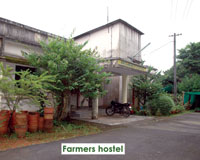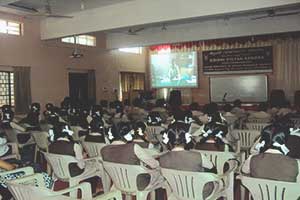
Facilities and demonstration units at KVK
|
|
|
 Soil Testing Lab |
 Museum |
 Library |
|
| Demonstration Units | |
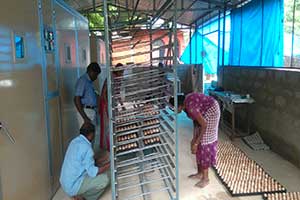 |
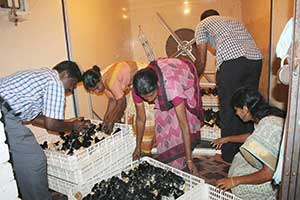 |
| Hatchery Unit | |
 Dairy Unit |
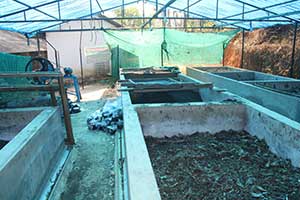 Vermi compost unit |
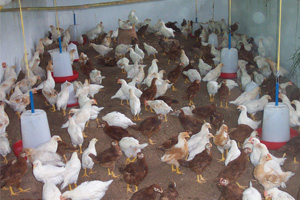 Poultry unit |
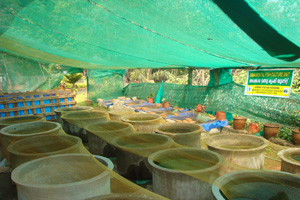 Ornamental fish culture unit |
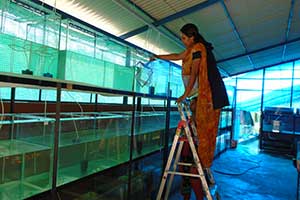 Fish sales unit |
 Cage Culture Unit |
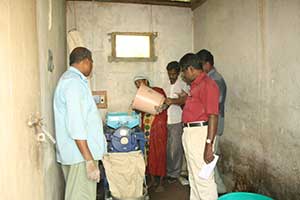 |
 |
| Feed Prepartion Unit | |
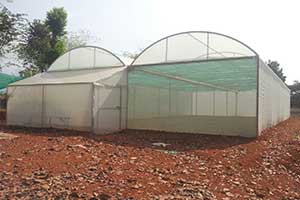 Polyhouse |
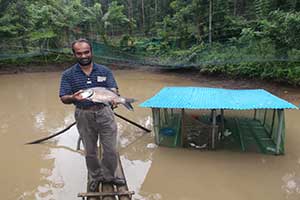 IFS Unit |
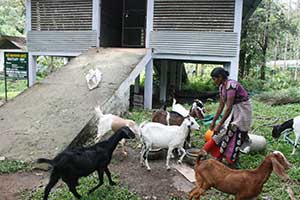 |
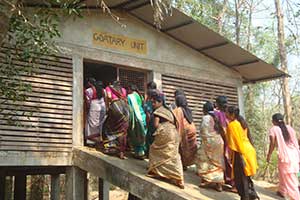 |
| Goatary Unit | |
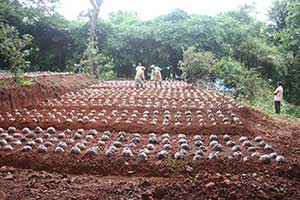 Coconut Nursery |
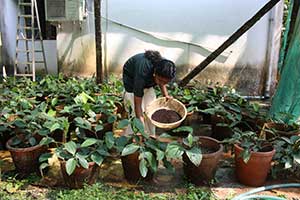 Bush Pepper Production Unit |
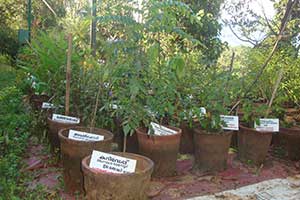 Medicinal Plant Unit |
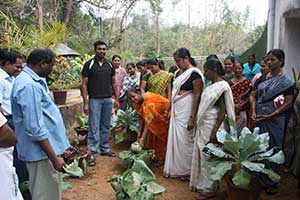 Vegetable Garden |
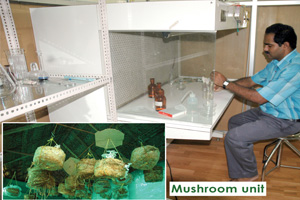 Mushroom Unit |
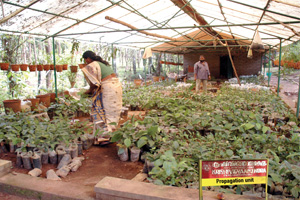 Nursery Unit |
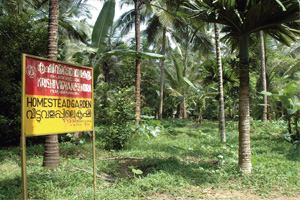 Homestead Garden |
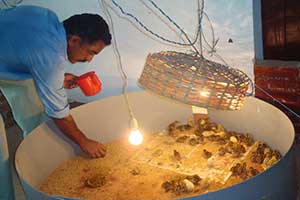 Quail Unit |
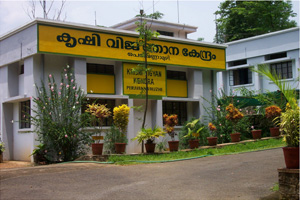
KVK is located about 60 km North East of the district headquarters at Peruvannamuzhi on the side of Perambra-Chembanoda road hardly 1 km away from Peruvannamuzhi dam. By boarding buses plying between Kozhikode and Poozhithode, one can reach KVK. In addition, frequent bus services are available fromPerambra to Peruvannamuzhi dam.
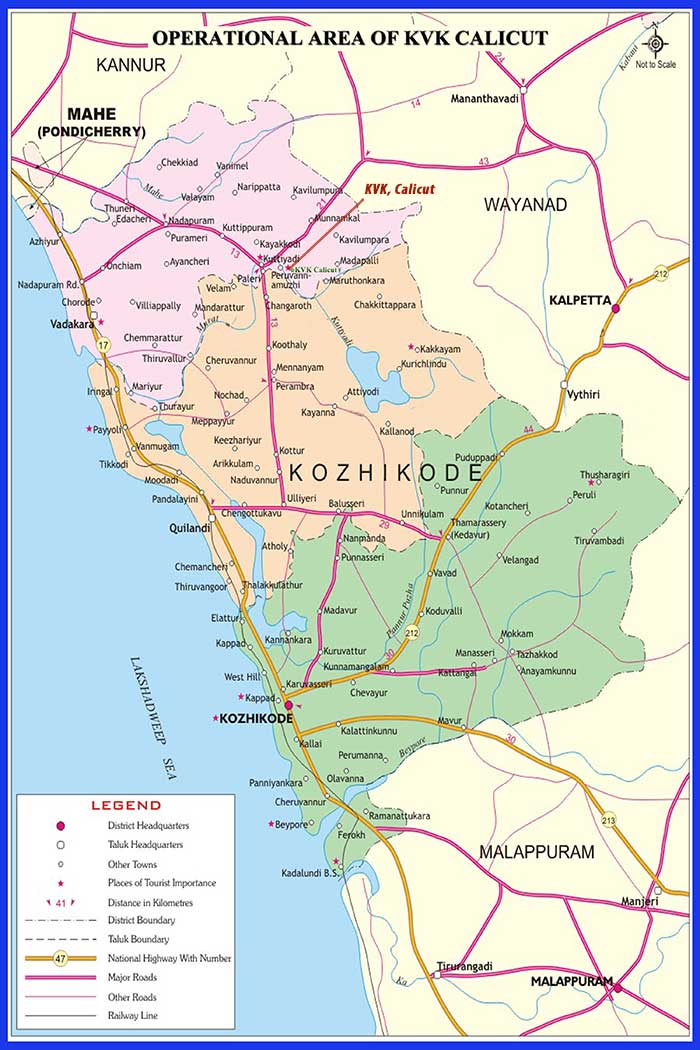

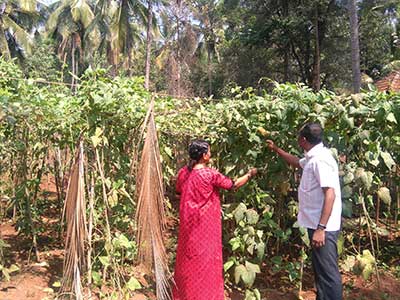
This is new concept of field demonstration of technologies. The main objective is to demonstrate newly released agricultural production technologies and their management practices in farmers' fields under different agro-climatic regions and farming situations.
In this programme, technologies are demonstrated for the first time by the scientists themselves, before being fed in to the main extension system of the line departments of the state. The prgrammes are carried out with the cooperation and complete participation of progressive farmers under the direct supervision of KVK scientists. A part of the expenditure on these demonstrations is born by KVK.
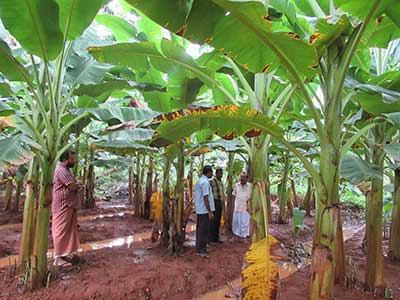
The programme aims at testing new technologies developed at research stations in the field of crop husbandry, horticulture, animal husbandry, fisheries etc. to ensure their suitability and sustainability to the specific locations and to suggest or modify or refine the technology accordingly. This is done by testing a released technology under the real farm situations with the participation of farmers. The real problems by the farmers in the adoption of new technologies are also fed back to the research centres. KVK meets the cost of critical inputs of the programmes.
Front line Demonstrations completed
High yielding variety of Amaranthus viz. Renusree:
Low productivity is the major problem faced by amaranthus farmers of the district. Hence a new high yielding variety of Amaranthus viz. Renusree was demonstrated that gave an average yield of 124.5 q/ha. Leaf spot disease incidence was high in Renusree compared to the variety Arun, for which eco-friendly low cost control measures including cultural practices were adopted.IISR Nutrient mixture for higher yield and quality in ginger:
Varada variety of ginger was used for the demonstration of IISR nutrient mixture for higher yield and quality in ginger. An average of 147 q/ha was realized from the variety with the use of the nutrient mixture. The soft rot disease incidence recorded was only 8.5%, while in check it was 16% and gave an average yield of only 142.5 q/ha. The farmers were convinced about the effectiveness of IISR nutrient mixture for higher yield with low incidence of disease.
High yielding short duration upland rice variety and use of reflective ribbons
for repelling birds from paddy fields
Demonstration on high yielding short duration upland rice variety Vaisakh, under rainfed condition recorded a yield of 43 q/ha, with an average straw yield of 13t/ha. The demonstration on reflective ribbons for repelling birds from the upland paddy grown in open area showed that ribbons were not successful in repelling birds like white rumped munia, attacking the crop. The farmers resorted to other low cost measures, to protect the crop from birds.
On farm trials completed
Sandless mixture for black pepper serpentine nursery:Due to acute scarcity of sand and high price, farmers were not adopting quick multiplication of high yielding varieties of black pepper using the recommended nursery mixture (soil: sand: FYM 2:1:1). An on farm trial on assessment of sandless nursery mixture for black pepper serpentine nursery was conducted with the following mixture combinations, (i) soil: coir pith compost: FYM mixture in the ratio 5:1:1; (ii) 2:1:1 nursery mixture, in which sand was substituted with rock powder; (iii) soil: coir pith compost fortified with FYM @ 200 g/ cft nursery mixture in the ratio 4:1. In treatment (iii), a sapling produced 48 nodes per year and the B : C ratio was 1.96. Hence use of soil : coir pith compost (4:1) fortified with FYM @ 200 g/ cft with utilisation of Trichoderma harzianum in nursery mixture may be advocated for serpentine multiplication to address the problem of high cost and non-availability of sand for planting material production of high yielding varieties of black pepper.
FLDs and OFTs for the year 2019-20
On farm trials- Assessment of performance of NPK capsules in organic ginger production
- Assessment of eco friendly management methods of rice bug
- Probiotics Supplementation on Lactation and conception in Milch Cows
- Assessment of different innovative technologies for deterring crop raiding wild elephants
- Assessment of ready to cook dehydrated jack fruit
- Demonstration on integrated pest and disease management in cowpea
- Osynch for Repeat Breeder cows
- Demonstration of a K use efficient variety of cassava viz. Sree Pavithra
- Demonstration of a HYV variety of Lesser Yam viz. Sree Latha
- Participatory seed production programme of a HYV of turmeric viz. IISR Pragati
- Backyard ornamental fish culture of guppy varieties
- High density fish farming using biofilters
- Dentrodigest for bioremediation of detritus in aquaculture - Culture of fishes using dentrodigest
- Participatory seed production of Kasturi turmeric
- Demonstration on rain house cultivation of leafy vegetables
- Demonstration of different oyster mushroom varieties in Kozhikode district
- EDP-Production of improved quality turmeric powder of elite varieties
- EDP-Production of value added products of ginger using advanced technology with the help of machinery







 1
1 2
2 3
3 4
4 5
5 6
6 7
7
